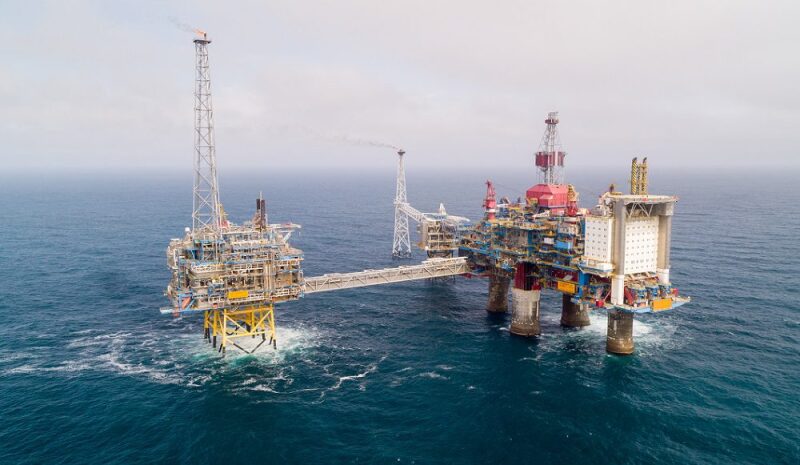Equinor and partners have agreed to partly electrify the Sleipner field on the Norwegian Continental Shelf, to progress toward the goal of emitting zero greenhouse gases by 2050.
Emissions savings from all the fields connected to onshore power are estimated at around 1.15 million tonnes of CO₂ per year, of which Sleipner’s share will be more than 150,000 tonnes. Since 1996, the Sleipner field has captured, injected, and stored more than 20 million tonnes of CO₂.
According to Equinor, using gas turbines to generate electricity on offshore installations accounts for one-quarter of Norway’s CO2 and NOx emissions.
In December 2019, Rystad Energy predicted that by 2025, 40% of Norway’s offshore oil and gas production will come from electrified platforms. Troll A in the North Sea was Norway’s first platform to use power from shore when it started production in 1996.
Electrification entails laying cables from the mainland to offshore structures, allowing offshore facilities to receive a portion of their electricity from shore-based power stations.
Cable supplier NKT will lay a 28-km high-voltage cable between Sleipner and Gina Krog, which has been connected to the Johan Sverdrup platform in the Utsira High area by a 62-km high-voltage cable.
The power-from-shore solution includes an additional 35 MW capacity to meet future power needs. In addition, Sleipner will continue to use onsite gas turbines to cover excess power requirements.
In October 2019, the Johan Sverdrup license, together with the partners in Gina Krog, Ivar Aasen, Edvard Grieg, and Sleipner with its tie-in fields, reached agreement on the allocation of shore-based power.

The same month, Aibel was awarded a front-end engineering-and-design contract to electrify Sleipner and Gina Krog. This contract has been expanded to engineering, procurement, construction, installation, and commissioning (EPCIC) responsibilities.
The EPCIC contract is valued at around NOK 400 million for Sleipner and160 million for Gina Grog. In sum, the power-from-shore investment will be around NOK 850 million for Sleipner and NOK 640 million for Gina Krog. The Business Sector’s NOx Fund will contribute up to NOK 430 million toward partial electrification of the field.
The plan is to connect Sleipner and Gina Krog to onshore power by the end of 2022.
Partners in the Sleipner license include Equinor Energy AS, Vår Energi AS, LOTOS Exploration and Production Norge AS, and KUFPEC Norway AS.


